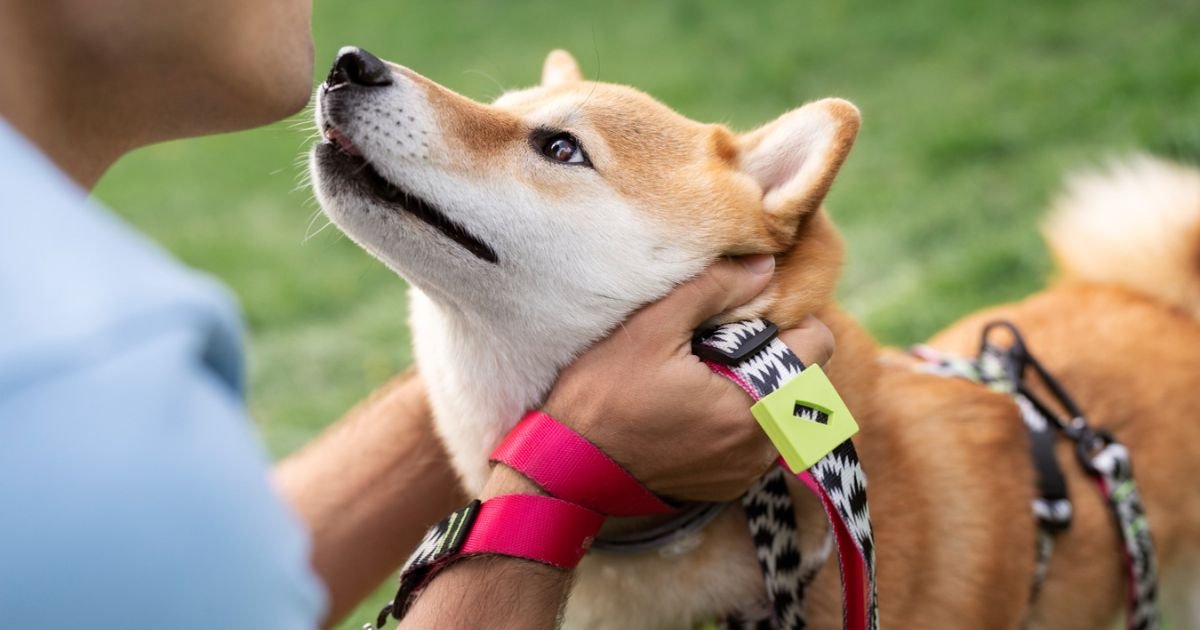A choke collar, also known as a slip collar or training collar, is a tool used to correct a dog’s behavior during training. But, how to put a choke collar on a dog is a topic of intense debate. So, let’s end this debate for once and all.
We know that a choke collar is designed to tighten around the dog’s neck when the leash is pulled, creating a choking sensation that discourages the dog from pulling or misbehaving.
Choke collars are primarily used for behavioral correction during training sessions. When used correctly, they can help teach dogs to associate certain behaviors (such as pulling) with discomfort, encouraging them to modify their actions.
These collars provide control over strong or excitable dogs, especially during walks or outdoor activities. They prevent excessive pulling and help maintain composure.
Importance of Proper Usage of Choke Collars and Safety:
While choke collars can be effective training tools, their proper usage is crucial:
Education
Dog owners must educate themselves on how to use choke collars correctly. Improper use can lead to harm, including damage to the dog’s neck and choking.
Consultation
Consult a professional trainer or veterinarian before using a choke collar. They can guide you on fitting it correctly and ensuring safe usage.
Limited Duration
Use choke collars only during training sessions and remove them afterward. Prolonged use can cause discomfort and harm.
Positioning
Place the choke collar high on the dog’s neck, just under the ears, to avoid sensitive areas like the trachea.
Remember that responsible training involves understanding the purpose, limitations, and safety considerations of choke collars. When used appropriately, they can be effective tools in shaping a well-behaved and obedient dog.
Types of Choke Collars
Below mentioned are a few types of choke collars:
Chain Slip Collars:
These are made of metal links that slide through one another. When pressure is applied (such as when the dog pulls), the collar tightens around the neck.
Chain slip collars are commonly used for training purposes.
Nylon Slip Collars:
Similar to chain slip collars, but made of nylon rope. They function in the same way, providing control when needed.
Martingale Collars:
While not exactly choke collars, martingale collars are worth mentioning. They have a limited slip design and are often used for dogs with narrower heads (like Greyhounds).
Martingales tighten slightly when the dog pulls but do not fully close like traditional choke collars.
Pros of Using Choke Collars:
- Choke collars can be effective for dogs that pull excessively during walks. They allow the owner or trainer to maintain control.
- Using a choke collar frees up your hands for other tasks while still maintaining control over your dog.
- When used correctly, choke collars can aid in teaching commands.
Cons of Using Choke Collars:
- Choke collars can cause harm if misused. They should not be used on puppies under six months, dogs with trachea or thyroid issues, brachycephalic breeds, or very small dogs.
- Some dogs find choke collars uncomfortable or painful, especially if not fitted properly.
- Inexperienced use can lead to damage to the dog’s neck or loss of circulation to the tongue.
Remember that proper fitting, limited use, and understanding the risks are essential when using choke collars.
Consult a professional trainer or veterinarian to determine if it’s the right choice for your dog’s specific needs. Alternatives like positive reinforcement training and other collar types may also be worth exploring.
Choosing the Right Choke Collar
When selecting a choke collar for your dog, several factors come into play. Let’s explore each aspect in detail:
- Use a soft tape measure to determine your dog’s neck circumference. Add a few inches to this measurement to find the correct length for the collar.
- The choke collar should fit snugly around your dog’s neck but not too tightly.
- Opt for a stainless steel choke collar made from high-quality materials that are durable and resistant to rust or corrosion.
- These collars offer strength and longevity, making them a preferred choice.
- Place the collar around your dog’s neck, with the metal rings on the sides positioned closer to the back of the neck.
- Ensure that the collar fits snugly without causing discomfort.
- Regularly check the condition of the collar and adjust it as needed to maintain a comfortable fit.
Choosing the right choke collar involves considering your dog’s size, behavior, and individual needs. Consult with a professional trainer or veterinarian if you have any doubts or questions about the fit or material choice.
Proper Placement of a Choke Collar
Proper placement of a choke collar is essential to ensure both effectiveness and safety. Let’s explore the details:
- Place the choke collar high on the dog’s neck, just below the ears. This positioning keeps the chain away from the more sensitive and easily damaged trachea lower down.
- The collar should never tighten to the point of causing damage. However, if the dog suddenly runs or jumps, causing the chain to tighten, the risks are lower when the chain is positioned high on the neck.
Remember that correct placement ensures effective communication during training while minimizing any potential harm to your dog.
The Looping Technique
When putting on a choke collar, the looping technique ensures a secure and comfortable fit. Follow these step-by-step instructions:
- Thread one end of the chain through the other to form a “P.”
- Ensure the chain forms a loop with the curved part of the “P” facing forward.
- Hold the chain and loop it over your dog’s head.
- Position the collar high on the neck, just below the ears.
- Make sure the straight part of the “P” is on top.
- Tighten the collar until it fits comfortably around your dog’s neck.
- Ensure it is snug but not too tight, allowing for easy movement and breathing.
Don’t forget to consult a professional trainer or veterinarian if you have any doubts about fitting the choke collar correctly.
Deciding on The Walking Side
Historically, dogs have been trained to walk on the left side of their owners. This allows the owner’s right hand to remain free for tasks like handshakes or greetings.
However, there is no strict rule. Some dogs may feel more comfortable walking on the right side or even switching sides during the walk.
Consider your comfort as well. If you’re right-handed, having your dog on the left side might be more convenient for handling treats or cleaning up after them.
Analyzing Your Dog’s Behavior
Pay attention to your dog’s behavior during walks. Do they naturally gravitate to one side? Are they more relaxed on a particular side?
Dogs can adapt to either side, but consistency helps. Pick a side and stick to it so your dog gets used to your walking style.
The best side for your dog depends on what works best for both of you. Whether it’s left or right, prioritize safety, comfort, and a pleasant walking experience for both you and your furry companion.
Safety Precautions
Ensuring your dog’s safety while using a choke collar is paramount. Let’s explore the essential safety precautions:
- Periodically inspect the choke collar during walks. Ensure it hasn’t become too tight or twisted.
- Make sure the collar hasn’t slipped down to a dangerous position (e.g., near the trachea). Adjust it as needed.
- Use light tugs on the leash to communicate with your dog rather than forceful pulls. Excessive pulling can strain the neck and cause discomfort.
- Reserve choke collar use for training sessions, not all-day wear.
Final Thoughts
Observe your dog’s behavior. Signs of discomfort may include excessive scratching, pawing at the collar, or restlessness. If your dog seems distressed or uncomfortable, remove the choke collar immediately. Responsible use and attentive monitoring are crucial for your dog’s well-being when using a choke collar.

